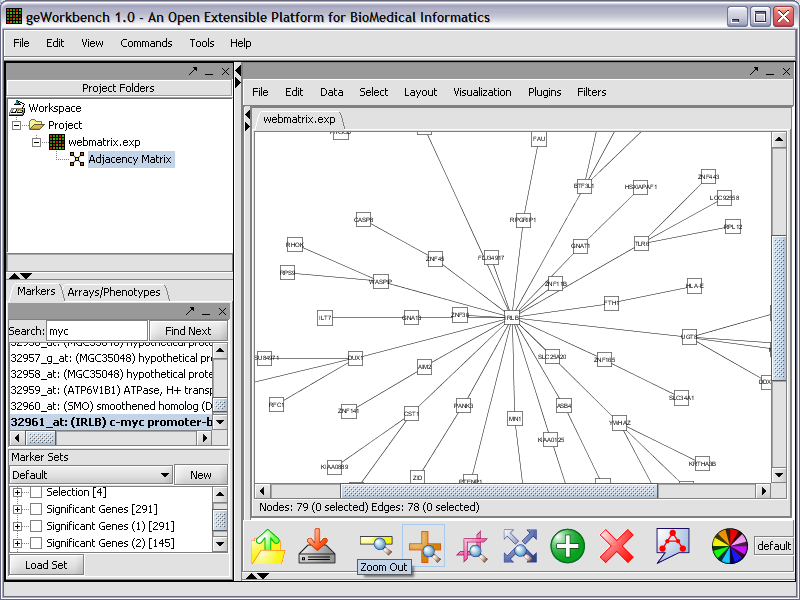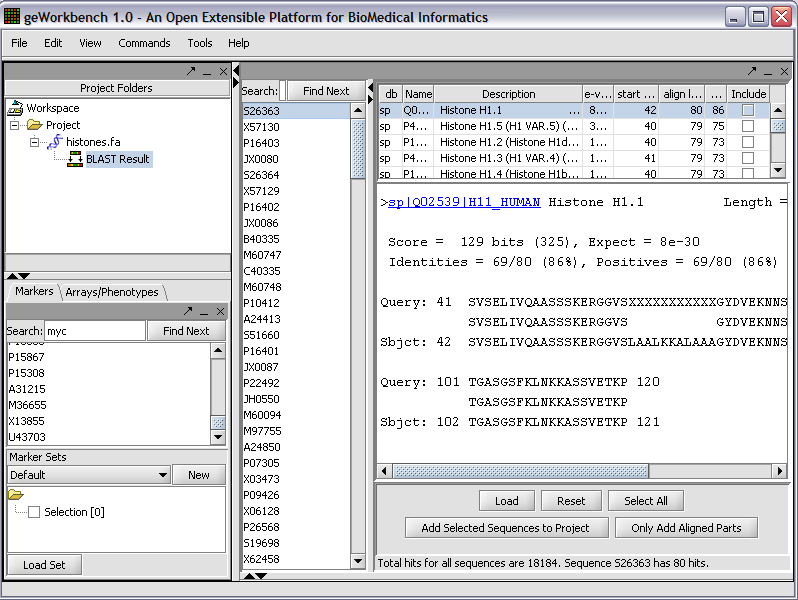|
|
| Line 2: |
Line 2: |
| | | | |
| | === Microarray Panel === | | === Microarray Panel === |
| − | [[image:microarray-panel.png|frame|The Microarray Panel displaying marker values for selected array.]] | + | The Microarray Panel displaying marker values for selected array. |
| | + | [[image:microarray-panel.png|frame]] |
| | | | |
| | === Color Mosaic === | | === Color Mosaic === |
Revision as of 12:46, 2 February 2006
geWorkbench 3.0 screenshots
Microarray Panel
The Microarray Panel displaying marker values for selected array.
Color Mosaic

The Color Mosaic component displaying selected arrays, group designation and marker names.
Tabular Microarray Panel

The Tabular Microarray Panel displays the raw values loaded from the data file.
Expression Profile

Expression Profile plotting values for selected markers and arrays.
Hierarchical Clustering

A Dendrogram displays the results of the Hierarchical clustering analysis.
SOM Clustering

Self Ordered Map clustering results are displayed as series of expression profiles corresponding to discovered groupings.
Scatter Plot

Compare multiple markers or arrays with the standard Scatter Plot analysis.
Volcano Plot

The Volcano Plot shows the results of a T Test analysis.
caBIO Pathway

Using a connection to caBIO, pathway diagrams can be retrieved and displayed.
Reverse Engineering

Use the ARACNE algorithm to reverse engineer the underlying gene regulatory network.
Cytoscape

Use the Cytoscape network visualization to view the reverse engineered regulatory network.
Pattern Discovery

Use the SPLASH algorithm to discover sparse amino or nucleic acid patterns in a loaded sequence.
Promoter Panel

The Promoter Panel uses the JASPAR Transcription Factor Binding Profile Database to search for promoter regions in the loaded sequence.
BLAST Queries

The BLAST panel runs queries against the Paracel Blast machine running at the Columbia Genome Center.














